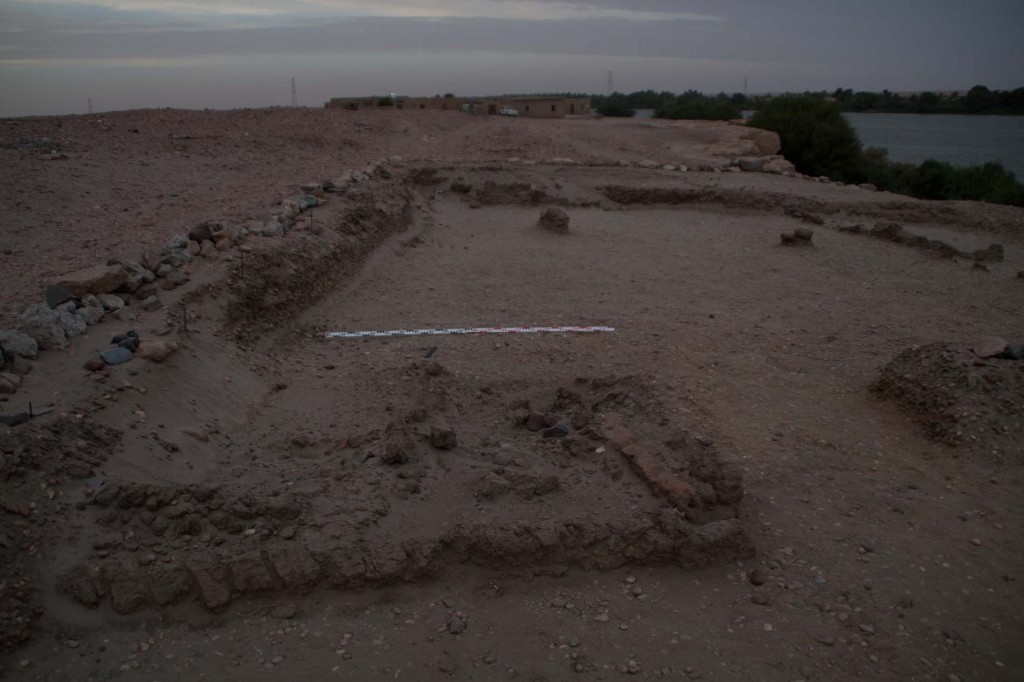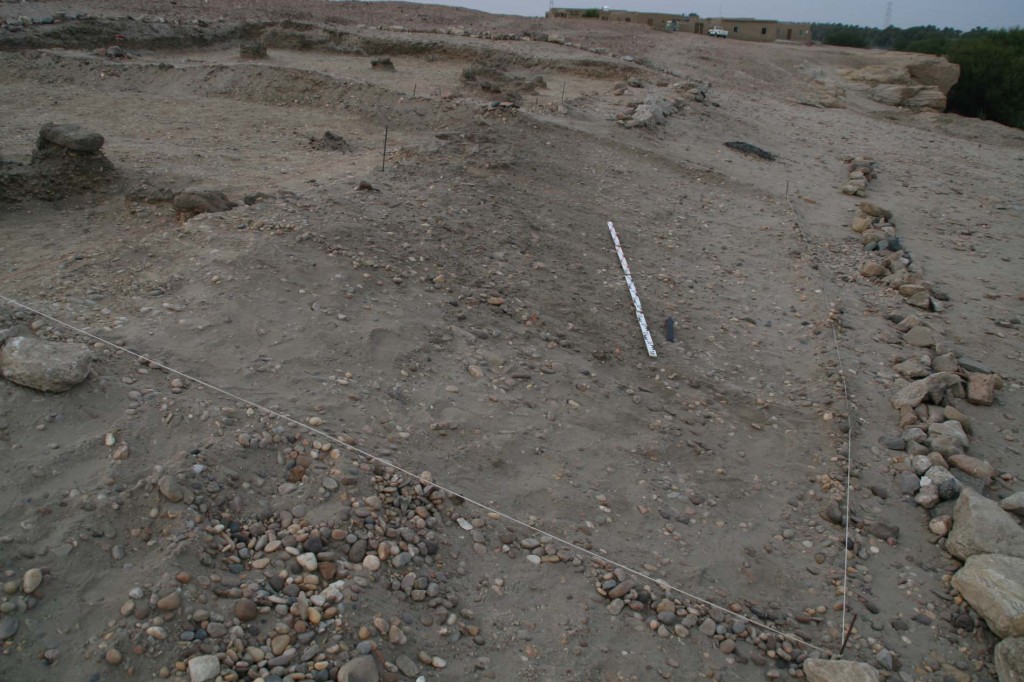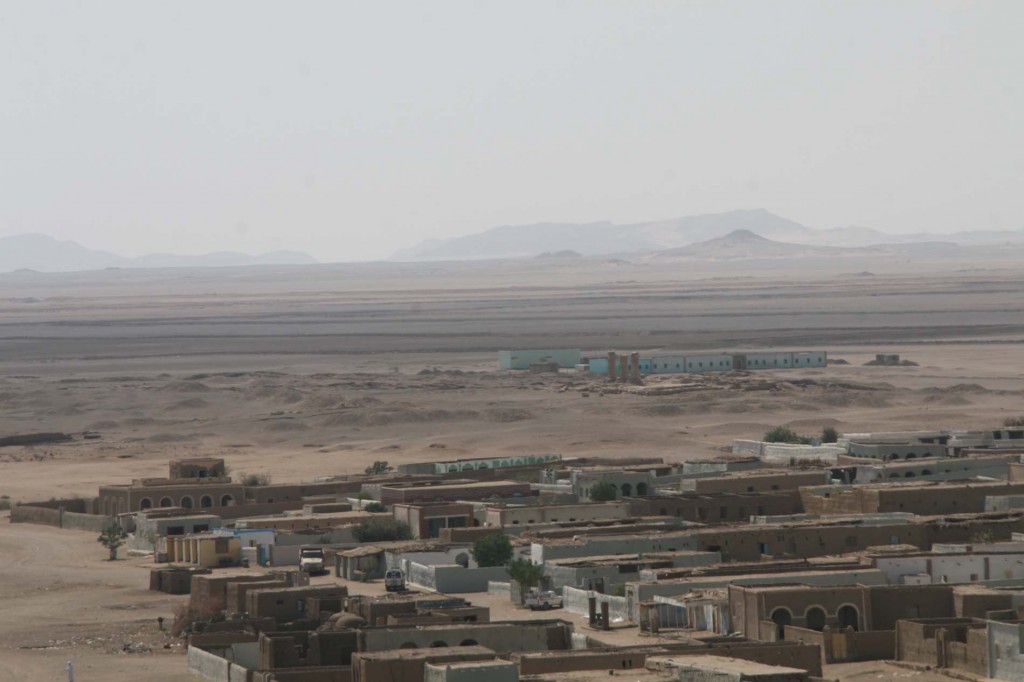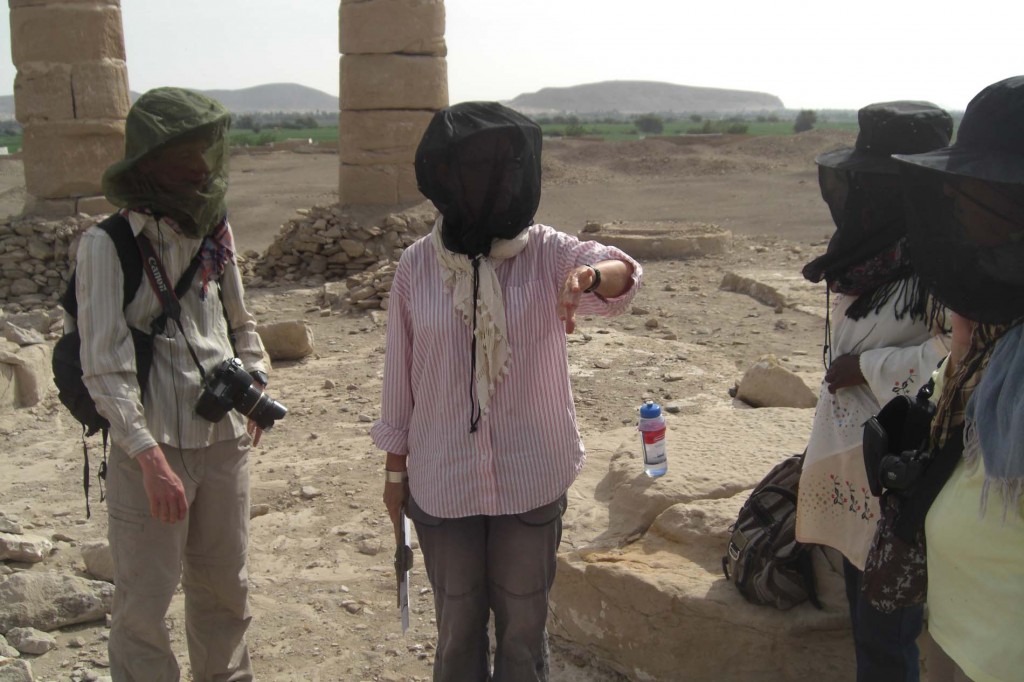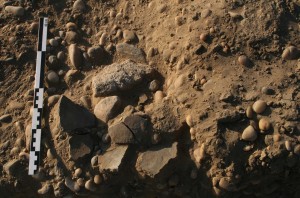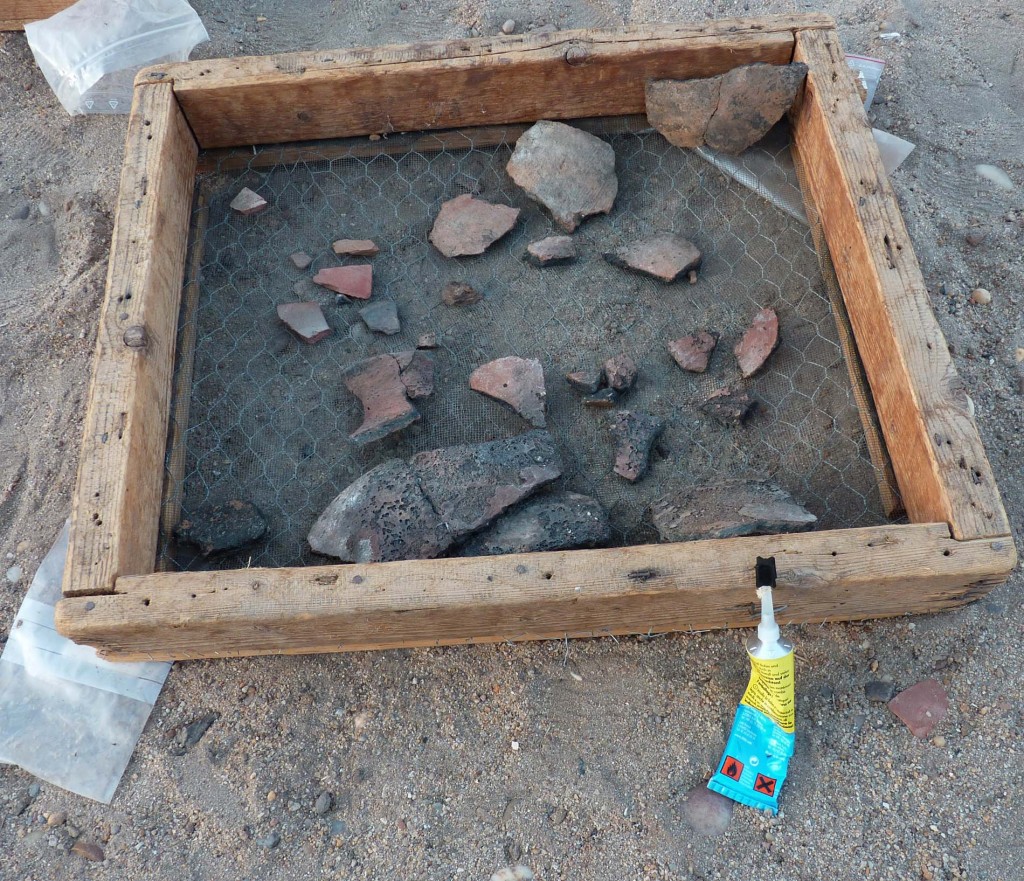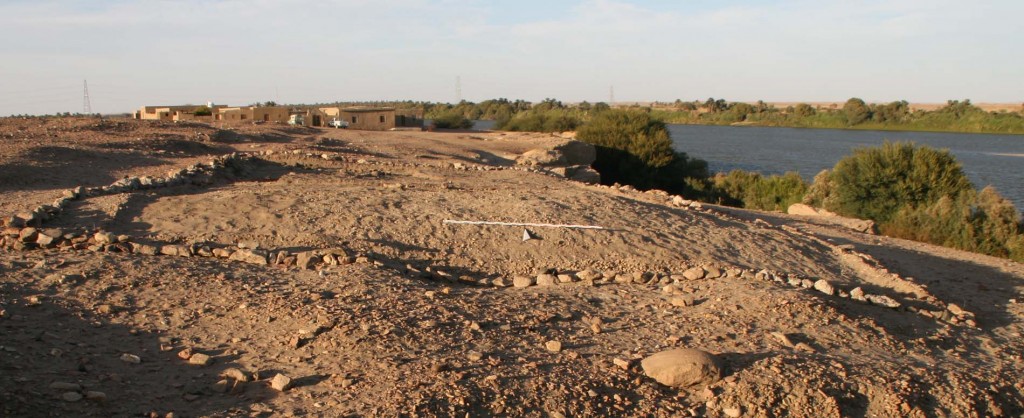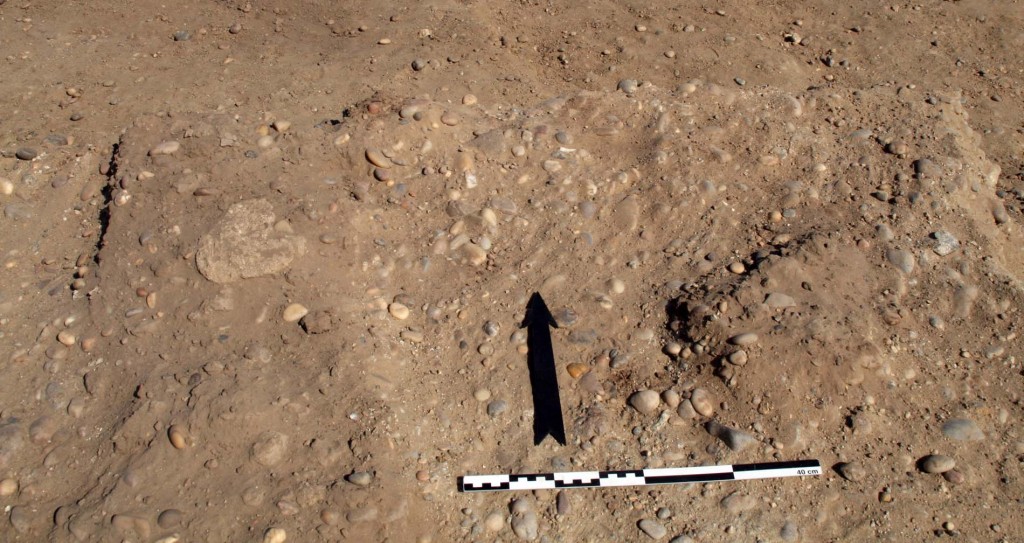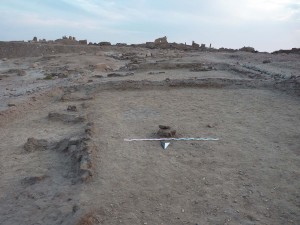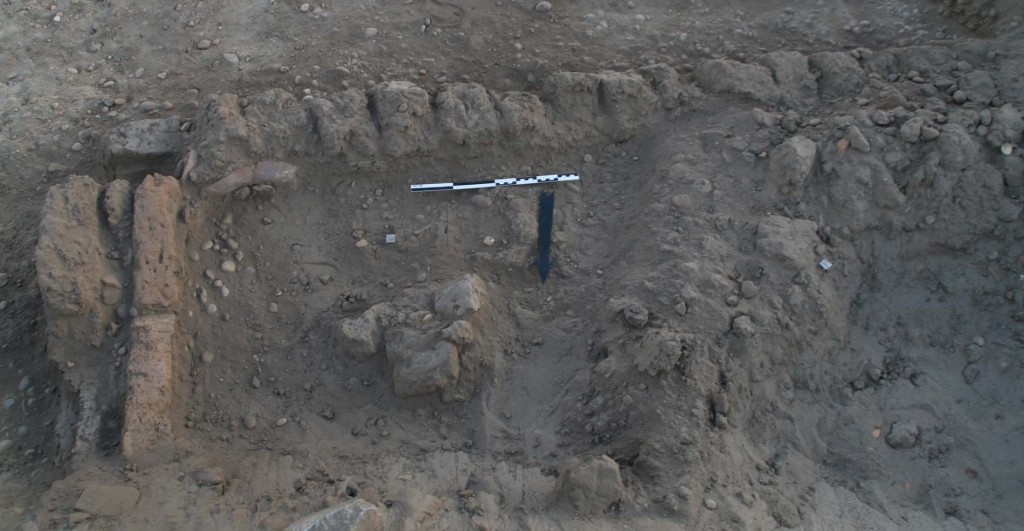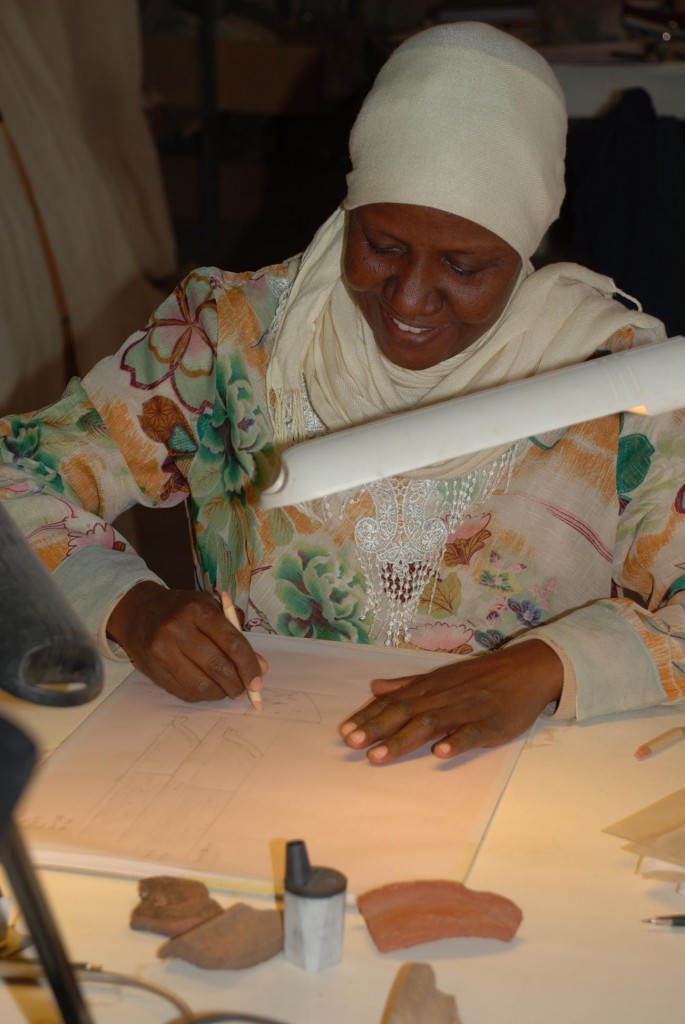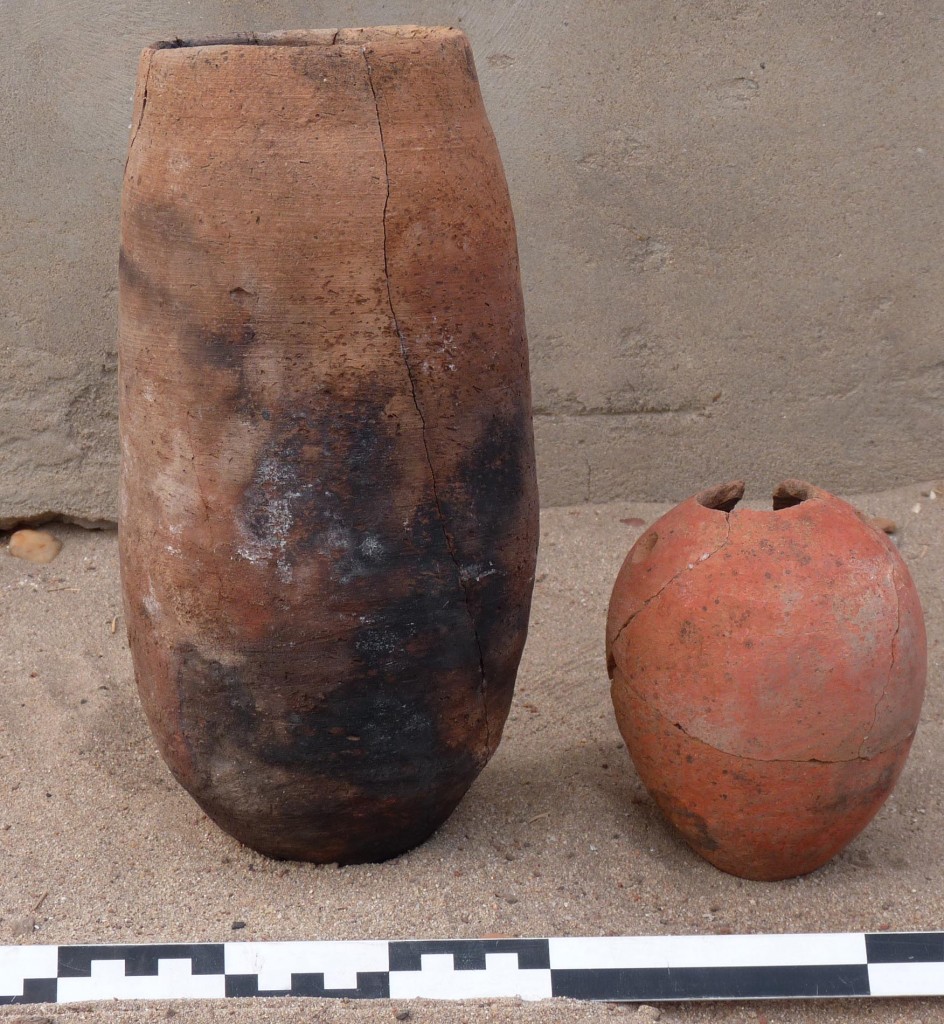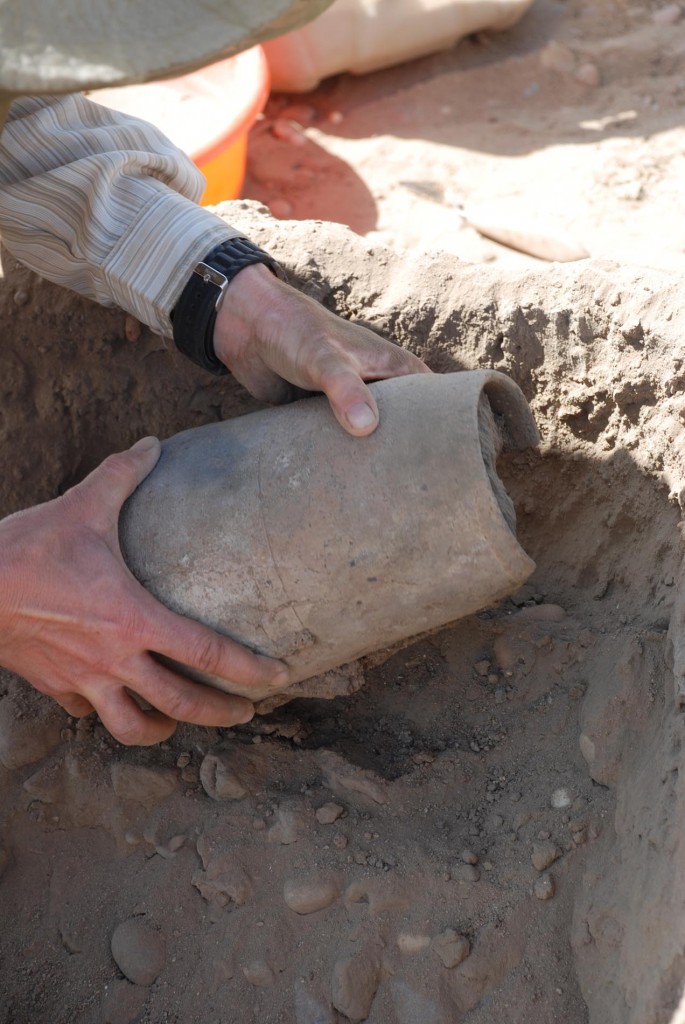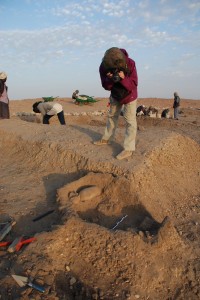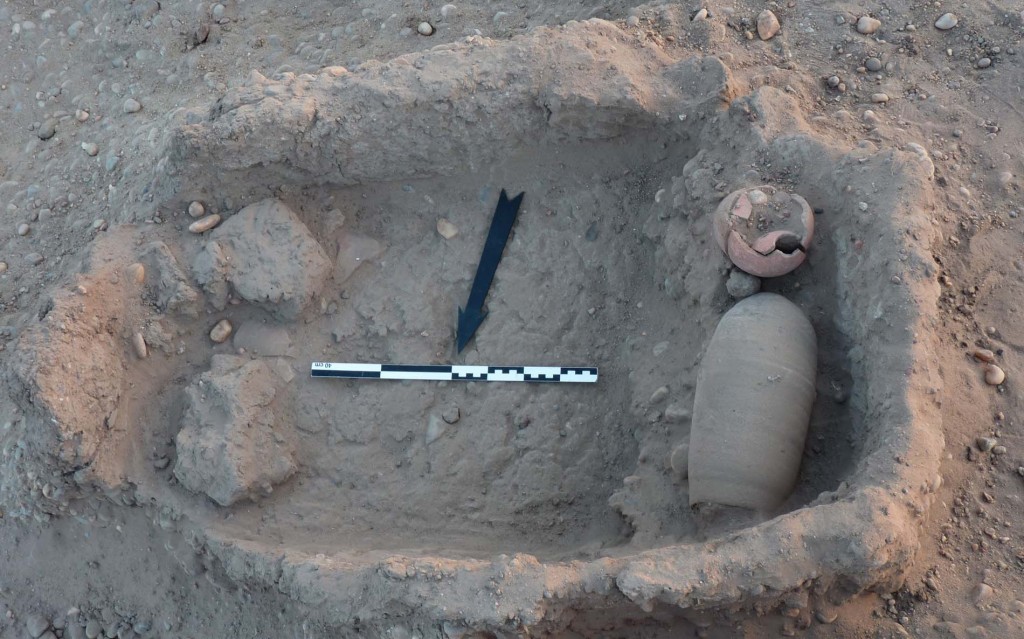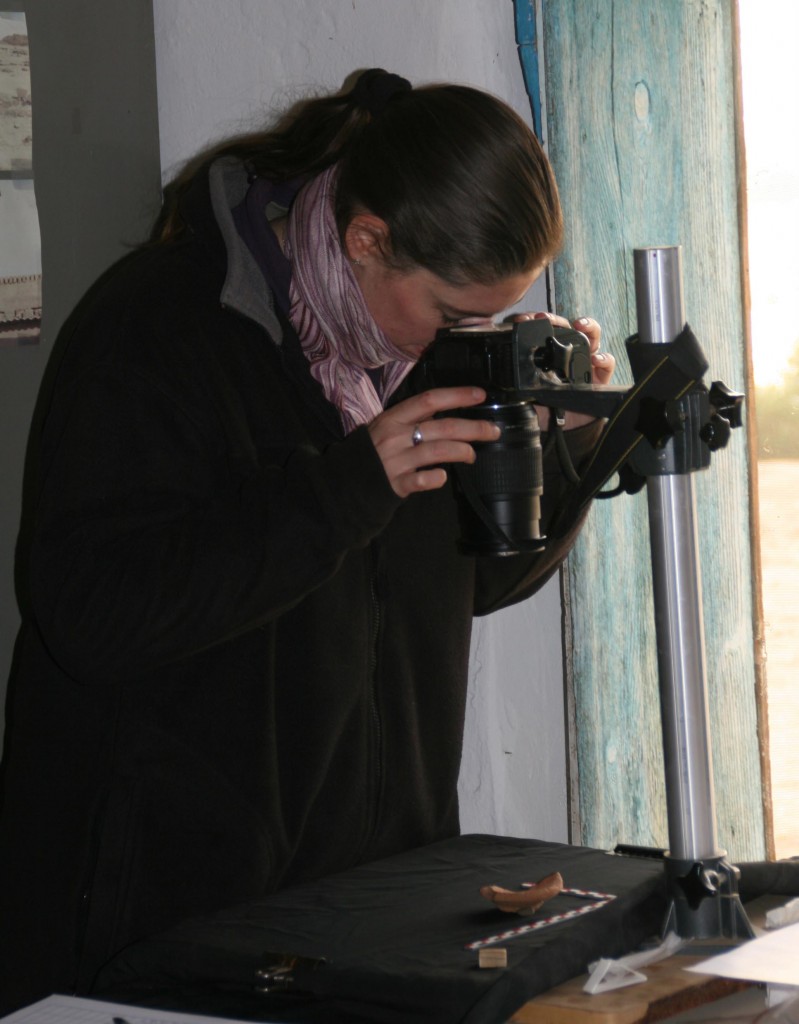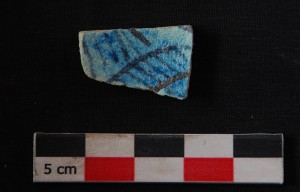Feature 15 is the mud brick structure located just in the north-western corner of Square 2, thus within the limits of Building A. To clarify both its size and date/function, we extended our excavation limit and removed the baulk just north of 15.
A lot of broken mud brick, pottery and sandy filling came to light, matching the results from the southern part and providing new information. Work is still not finished, but today we found the Northeast corner of feature 15! Its eastern wall measures 2.15 m and is lined in the interior with red burnt bricks – the first outline is visible on the photo, together with a lot of collapsed brick material which we did not yet cleared.
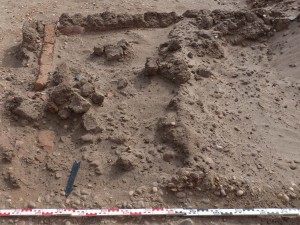 Between the debris of bricks, there are quite a lot of pottery sherds. These ceramics from the filling of feature 15 are mixed material – approximately half of it is 18th Dynasty in date, the other half originates from Medieval times. The western limit of feature 15 is still not excavated, being located to the west of Square 2.
Between the debris of bricks, there are quite a lot of pottery sherds. These ceramics from the filling of feature 15 are mixed material – approximately half of it is 18th Dynasty in date, the other half originates from Medieval times. The western limit of feature 15 is still not excavated, being located to the west of Square 2.
It is still too early to propose a date for feature 15 – hopefully finishing its excavation in the next days will also illuminate date and function.

